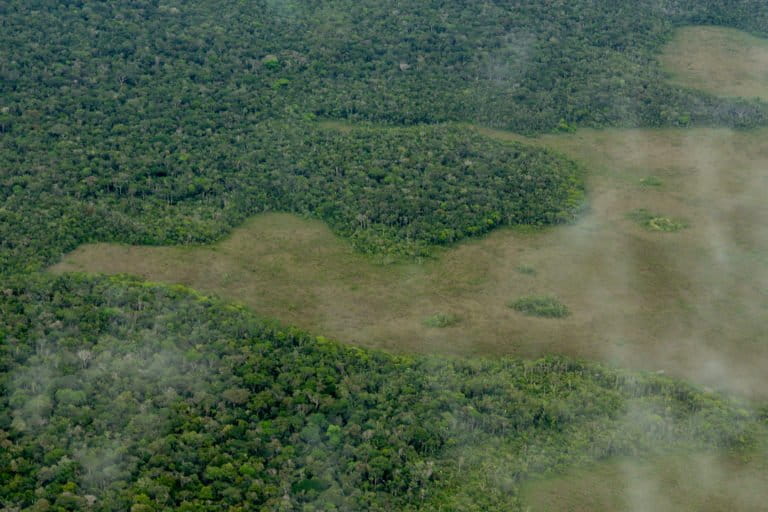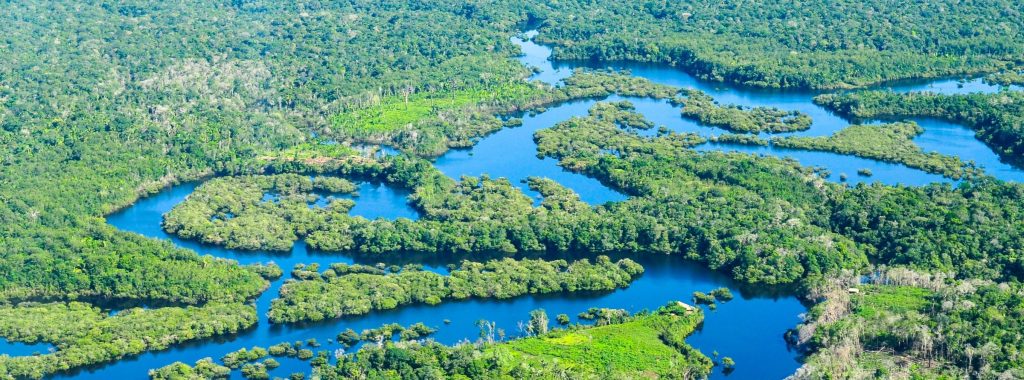Mongabay
Maxwell Radwin
19 de enero, 2023
- A new report says forests managed by Indigenous communities tend to be carbon sinks rather than carbon sources, while areas under different management are often less predictable.
- Areas of the Amazon titled or under formal claim by Indigenous people have been some of the most secure and reliable net carbon sinks over the past two decades, sequestering more carbon than they’ve emitted.
- But Indigenous communities are feeling increasing outside pressure from economic development projects, one reason the report argues that Indigenous-managed forests must be secured.
Some of the last remaining carbon sinks in the Amazon Rainforest are largely managed by Indigenous people, a new report from the World Resources Institute says.
In areas of the Amazon managed by Indigenous communities, forests tend to be carbon sinks rather than carbon sources, while areas under different management tend to have already passed their tipping point — yet another reason why Indigenous communities are so vital to forest conservation, the report says.
“As more forests are lost and converted to other uses, Indigenous and other community forests stand out as stable carbon sinks that must be secured,” it says. “Should community forests be degraded or lost, large stocks of carbon would be released into the atmosphere and the lands would no longer be able to sequester the same amount of carbon.”
Sequestering carbon is one of the main strategies for capping the global temperature rise at less than 1.5° Celsius (2.7° Fahrenheit) above pre-industrial levels. Experts warn that the Amazon is on the verge of “tipping over” from being a net sink to a net source, making the global temperature goal much more difficult to achieve, if not impossible.
Areas of the Amazon managed by Indigenous people with documented or formal land claims have been some of the most secure and reliable net carbon sinks over the past two decades, the report says, meaning they’ve sequestered more carbon than they’ve emitted. Between 2001 and 2021, they emitted around 120 million metric tons of CO2 annually while removing 460 million metric tons, a net total of 340 million metric tons removed.
That’s equivalent to the U.K.’s annual fossil fuel emissions.
Meanwhile, areas under different kinds of management have tended to be net carbon sources.
“The lands outside of Indigenous territories in the Amazon are actually a source now, and that includes the non-Indigenous protected areas,” said report co-author Peter Veit, director of WRI’s Land and Resource Rights Initiative.

Veit and co-author David Gibbs, a geographic information system (GIS) research associate at WRI, initially wondered if Indigenous-managed forests were net carbon sinks because they’re more efficient than forests outside Indigenous lands at capturing carbon dioxide. But it turns out both types of forest are equally efficient at capturing carbon dioxide, and what sets Indigenous-managed ones apart is the managers’ ability to stave off deforestation.
“Indigenous people can sustainably steward their forests by reducing emissions from deforestation,” Gibbs said. “It’s yet more evidence of the contributions of Indigenous people to climate change mitigation.”
Indigenous communities treat the land as a source of food, medicine and construction material, among other things, the WRI report says. As a result, the forest serves as a form of employment, security and culture that incentivizes them to sustainably manage their natural resources.
Read more: Indigenous lands hold the world’s healthiest forests – but only when their rights are protected
Under economic pressure
However, the report also notes that not all Indigenous-managed forests are equal when it comes to contributing to carbon sequestration. While those in Brazil collectively continue to be strong carbon sinks, many in the Bolivian and Peruvian portions of the Amazon have relatively higher emissions and are closer to becoming carbon sources.
Part of the reason is that some Indigenous communities are feeling increasing outside pressure from governments and companies interested in economic development, the report says.
“Territories became more vulnerable due to the increased invasions in Indigenous territories by illegal loggers or gold miners that were stimulated by the former [Brazilian] government,” said Adriana Ramos, policy and law adviser at Instituto Socioambiental, a nonprofit that advocates for the rights of Indigenous and traditional peoples.
Former president Jair Bolsonaro incentivized development in the Amazon, accelerating deforestation and putting Indigenous people and environmental defenders at greater risk.
WRI’s report argues that Indigenous-managed forests need to be secured to save the Amazon Rainforest’s last carbon sinks. One way of doing this, it says, is to integrate them into conservation strategies being developed by international negotiators, national policymakers, donors and civil society leaders.

Currently, countries like Brazil, Colombia and Peru see Indigenous-managed forests contributing to around 30% of national emission reductions pledges, the report says. But there’s opportunity to do more.
“There’s still a long way to go to getting money directly to communities and their organizations,” Veit said. “We’re calling for more capacity building and more support to these communities.”
Bilateral, multilateral and private foundations donated about $2.7 billion to community forest management efforts in tropical countries between 2011 and 2020, representing less than 1% of official development assistance donations to climate change mitigation.
At the COP26 climate summit in 2021, funders pledged $1.7 billion to Indigenous and community forest conservation efforts. However, only 7% went directly to the organizations led by Indigenous groups, according to a progress report issued during last year’s COP27 summit.
The WRI report also urges increased government support for Indigenous land management. While informal, customary ownership of the land in the Amazon still tends to result in low deforestation, it says, those figures tend to be even better when the government provides some form of tenure security, such as a land title.
Other forms of government assistance could also include resources for improved monitoring and surveillance.
“There is much that can be done to protect forests and the communities who call them home,” the report says. “At stake is not just the fate of carbon, but people’s lives and lifestyles.”
Read more: Reaching the Paris Agreement without protecting Indigenous lands is “impossible”, says report
Banner image: The Amazon Rainforest in Amazonas, Brazil. Photo courtesy of Flickr/CIFOR.
Related listening from Mongabay’s podcast: We look at how the Shuar Indigenous community in Ecuador recently won a major victory to protect its ancestral territory of Tiwi Nunka Forest from cattle ranchers, loggers and miners. Listen here:
Editor’s note: This article previously stated that carbon emissions took place between 2011 and 2021. They actually took place between 2001 and 2021.

